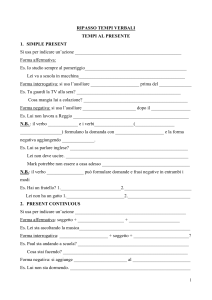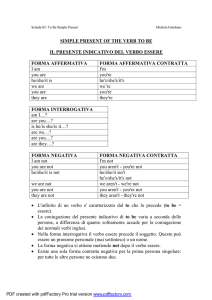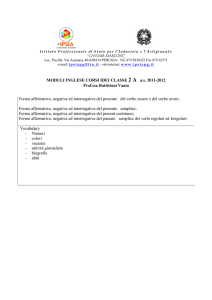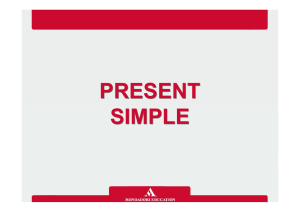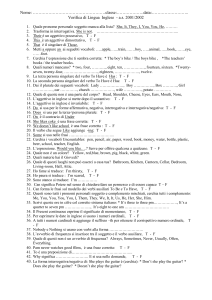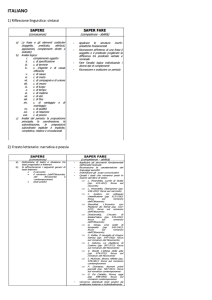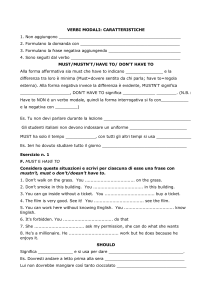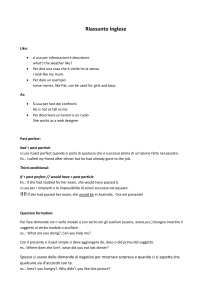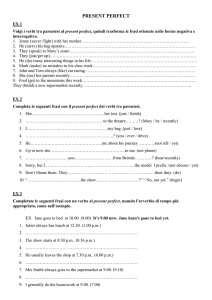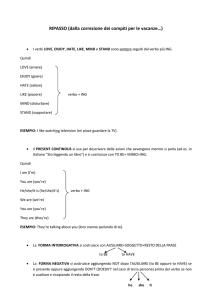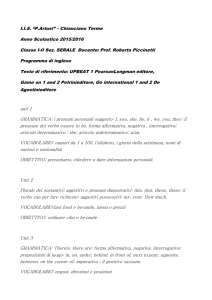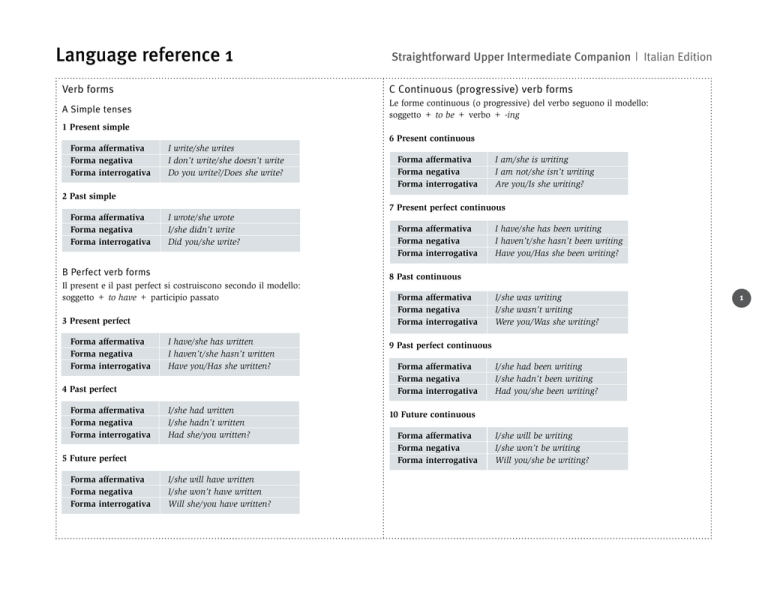
Language reference 1
Straightforward Upper Intermediate Companion | Italian Edition
Verb forms
C Continuous (progressive) verb forms
A Simple tenses
Le forme continuous (o progressive) del verbo seguono il modello:
soggetto + to be + verbo + -ing
1 Present simple
Forma affermativa
Forma negativa
Forma interrogativa
I write/she writes
I don’t write/she doesn’t write
Do you write?/Does she write?
6 Present continuous
Forma affermativa
Forma negativa
Forma interrogativa
I am/she is writing
I am not/she isn’t writing
Are you/Is she writing?
2 Past simple
Forma affermativa
Forma negativa
Forma interrogativa
I wrote/she wrote
I/she didn’t write
Did you/she write?
B Perfect verb forms
Il present e il past perfect si costruiscono secondo il modello:
soggetto + to have + participio passato
3 Present perfect
Forma affermativa
Forma negativa
Forma interrogativa
Forma affermativa
Forma negativa
Forma interrogativa
I/she had written
I/she hadn’t written
Had she/you written?
10 Future continuous
I/she will have written
I/she won’t have written
Will she/you have written?
I have/she has been writing
I haven’t/she hasn’t been writing
Have you/Has she been writing?
8 Past continuous
9 Past perfect continuous
5 Future perfect
Forma affermativa
Forma negativa
Forma interrogativa
Forma affermativa
Forma negativa
Forma interrogativa
I have/she has written
I haven’t/she hasn’t written
Have you/Has she written?
4 Past perfect
Forma affermativa
Forma negativa
Forma interrogativa
7 Present perfect continuous
Forma affermativa
Forma negativa
Forma interrogativa
Forma affermativa
Forma negativa
Forma interrogativa
I/she was writing
I/she wasn’t writing
Were you/Was she writing?
I/she had been writing
I/she hadn’t been writing
Had you/she been writing?
I/she will be writing
I/she won’t be writing
Will you/she be writing?
Language reference 1
Straightforward Upper Intermediate Companion | Italian Edition
D Passive verb forms
What clauses
Il passivo si costruisce con:
to be + participio passato
Si può rendere maggiormente enfatica un’affermazione trasformandola in una
frase introdotta da what.
It
is
is being
was written
hasn’t been
will be
here.
now.
ages ago.
yet.
soon.
I don’t understand why they do it.
What I don’t understand is why they do it.
I wanted to know his name.
What I wanted to know was his name.
E Modal verbs
In inglese, ci sono nove ausiliari modali (will, would, can, could, shall, should,
may, might, must). Essi sono seguiti dall’infinito senza to. Alcuni altri verbi
hanno caratteristiche simili ai modali. I principali sono: have to, need to, ought
to.
Subject questions
In inglese, l’interrogativa si ottiene mettendo il soggetto tra l’ausiliare e il verbo
principale, secondo il modello:
(ausiliare) soggetto verbo
Have you finished?
Se all’affermativa non c’è ausiliare (per es. present simple e past simple) si
ricorre a do/does/did in funzione di ausiliare.
Do you drive?
Nelle domande con to be il soggetto segue il verbo.
Are you sure?
Se il soggetto è un pronome interrogativo (who, what o which), il verbo segue
il soggetto, come in una frase affermativa. Non si usano do/does/did al present
simple o al past simple di una frase introdotta da un pronome interrogativo.
Who gave you that?
What happened to you?

